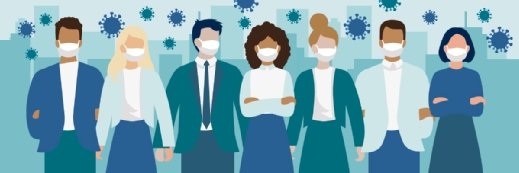
DrAfter123/DigitalVision Vectors
How Big Data Analytics Can Mitigate COVID-19 Health Disparities
During the COVID-19 pandemic, big data analytics have helped organizations pinpoint and reduce health disparities among patient populations.
While the rapid spread of COVID-19 has exposed many unflattering healthcare truths, the glaring health disparities highlighted by the pandemic are perhaps the most detrimental to patient health.
For more coronavirus updates, visit our resource page, updated twice daily by Xtelligent Healthcare Media.
The virus has had a disproportionate impact on minority and underserved communities, shining a spotlight on existing clinical and non-clinical inequities.
“Minorities are more likely to suffer from chronic conditions like high blood pressure, diabetes, obesity, and heart disease. Additionally, these patient populations typically lack access to adequate healthcare, or have a limited understanding of the healthcare system,” said Sampson Davis, MD, an emergency medicine physician.
“These individuals also tend to work in the service industry – transportation, the food industry, or airports. In these jobs, there's no work-from-home possibilities that can allow people to distance themselves socially. In that sense, there’s a heighted risk of exposure to COVID-19.”

In order to target and reduce the impact of the virus on minority populations, organizations have increasingly turned to data analytics techniques to better track COVID-19 spread.
“As healthcare experts, collecting data is invaluable in what we do. It allows us to track what is working and what is not. Without data, we will pretty much continue to do the same thing over and over again expecting a different outcome,” said Davis.
“In order to decrease the impact of this virus, we need to track which solutions work and which don't work, as well as where the virus is currently having the biggest impact. The data also breaks down the tedious minutia needed for our pandemic response, because what works for one community won’t necessarily work for the next community.”
With data analytics tools, providers have been able to deliver the right care to the right patients at the right time. These technologies helped clinicians navigate the early months of the pandemic, allowing them to uncover essential information to appropriately treat their patients.
“We started off thinking medications like hydroxychloroquine would have an impact, which it hasn't. What we have seen with the data collected is that a medication called dexamethasone has helped us to decrease the impact of the virus. We have also discovered that turning patients from a supine position on their back to lying on their chest or abdomen allows them to actively participate in their breathing, which improves their chances of recovery,” said Davis.
“The data has also enabled us to know where the hotspots were – that at one point in time the virus was surging in New York and New Jersey, and then it traveled south to Georgia and Florida, and then over to Texas and Colorado. When we know where these hotspots are, we can try to understand why these areas are impacted the most, and we can target interventions to mitigate the impact of the virus.”
In the coming months, as the country works to reduce the effect of COVID-19, Davis noted that the healthcare industry will need to use data to get ahead of the virus.
“We have experienced similar scenarios throughout history. We’ve seen polio, we’ve seen the flu, we’ve seen mumps and measles. These are all diseases that we now have vaccines for, and that is the result lot of discovering the technology to defeat the virus or the bacteria, but also collecting the data to know what works and what doesn't,” said Davis.
“So now, we have to think about how we gather and share data across the country to pinpoint where the need is the greatest. And by knowing where the need is the greatest, we can then say that if we have a vaccine or treatment, we can start there to see what type of impact this treatment may have."
Data sharing will also play a key role in mitigating the impact of coronavirus, Davis stated.
“The virus is ahead of us and we’ve had to do catch-up for the last six months. And now I feel like we're starting to get to a place where things are balancing. Unfortunately, we have lost hundreds of thousands of lives. But at the same time, sharing the information liberally and equally across the table allows us to see where the greatest need is and how to make the greatest impact with the treatment of patients,” he said.
“When I started in medicine, we used paper charting, and now we have everything in a digital format with the latest information readily accessible. It goes without saying that data analytics are instrumental when it comes to healthcare delivery day in and day out, and it's going to serve the same role in defeating this pandemic.”
The pandemic has highlighted the substantial care disparities that exist in healthcare, and many expect that the strategies developed during this period will endure even after the situation has waned.
“We will get past this moment with coronavirus. But it has shown us is that in order to achieve health equity, we have to defeat healthcare disparities. That means reducing the disproportionate numbers of minorities that suffer from high blood pressure, diabetes, heart disease, obesity, and other conditions,” Davis concluded.
“Coronavirus did not target one community or race or gender, but you can see those who are at greatest risk suffer the most. The beauty of collecting the data is not just that we have this information, but also that we can use this information to move forward. My hope is that we all step up and continuously push ourselves to be on the forefront of making a difference in our country.”







